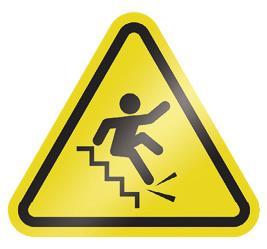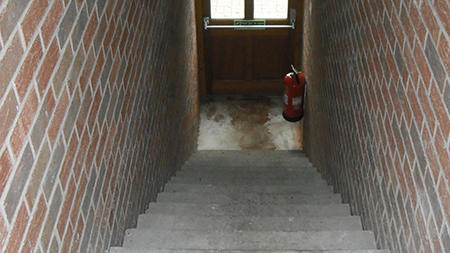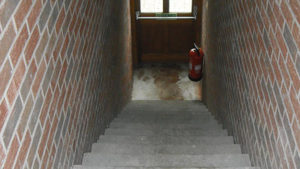It is
important to know the HSE are continuing to run their campaign and are
following up with checks or site inspections to identify if organisations are
controlling the risk from metalworking fluids; the information below will
increase your awareness and give you a better understanding of what is required
to comply with the guidance.
This hot
topic and subsequent checks are anticipated to continue into the New year, as a
direct result of increased numbers of associated ill health conditions being
recorded.
What are
metalworking fluids and oil mists?
Metalworking
fluids (MWFs) – sometimes referred to as suds, coolants, slurry or
soap – are water-based fluids used during the machining of metals to provide
lubrication and cooling, and to help carry away debris such as swarf and fine
metal particles. They can also help to
improve machining performance and prolong the life of the cutting tool, as well
as providing corrosion protection for workplace surfaces.
Oil
mists form when high pressure fuel oil, lubricating
oil, hydraulic oil, or other oil is sprayed through a narrow crack, or
when leaked oil connects with a high temperature surface, vaporises, and meets
low air temperature. This can happen while the fluids interact with the
moving parts during the machining processes. Some oil mist particles are
smaller than the eye can see but the danger is still as big!
Health
risks of MWFs & Oil Mists
If the mist
from oil or MWFs (applied by continuous jets, sprays or via a hand dispenser)
are either inhaled, touch unprotected skin, enter wounds or broken skin, or get
access to the eyes or mouth – they could affect employee health and lead to
several varying illnesses.
Exposure to
such fluids can cause irritation of the skin, occupational asthma, bronchitis,
irritation of the respiratory tract, general breathing difficulties or in
extreme cases, can see individuals develop a serious lung disease called
extrinsic allergic alveolitis.
Metalworking
fluids that contain water or water-mixes are particularly vulnerable to becoming
highly contaminated with harmful bacteria and other micro-organisms.
What
precautions should be put in place?
Before any
precautions are put in place, a suitable and sufficient survey of mental
working fluids must be undertaken. This will detail current and safe exposure
levels alongside any cause for concern in relation to staff health and safety.
Other areas
to consider:
- Use splash
guards, to control splashing and misting.
- Minimise the
production of mist and vapour by controlling the volume and rate of
delivery of the fluid to the cutting edge of the tool.
- Install
enclosures or ventilation to remove / control any mist or vapour produced.
- Inform staff
of a recommended time delay before opening the doors on machine enclosures
– to ensure that all mist and vapour has been removed by the ventilation
before exiting.
- Ensure
employees know the reporting process for any damaged or defective splash
guards, ventilation hoods or other control equipment.
- Open workroom
doors and windows to improve natural ventilation.
- Don’t use
compressed air to remove excess fluids from machined parts, plant or other
equipment.
- Conduct
regular health surveillance checks.
Exposure
Limits
In 2005,
the Health & Safety Executive withdrew the exposure limit for Metalworking
Fluids (set at 1.0mg/m3) due to outbreaks of ill health at a manufacturing
facility within the UK. It was found that exposures were successfully being
controlled below the exposure limit set at the time, however, workers were
still experiencing occupational ill health.
The
National Institute for Occupational Safety & Health (NIOSH) have set a
Recommended Exposure Limit (REL) of 0.5mg/m3, however, levels of exposure below
this standard have been found to cause ill health which means that the
standards set by various bodies have no relevance to the risk of health.
In the
absence of a relevant exposure limit, more emphasis should be put on
controlling exposures to MWF’s via good controls and working practices which minimise
exposures as low as is reasonably practicable.
It should
be noted, that although there may not be a specific exposure limit for the MWF
itself a review of the datasheet for the specific product being used should be
carried out to identify the need to conduct exposure monitoring for any harmful
ingredients with published exposure limits e.g. 2-(2-Butoxyethoxy)
ethanol, Monoethanolamine etc
Oil mists
are much more straight forward and have an exposure limit currently set at
5mg/m3.
Routine
exposure monitoring can ascertain current exposures, identify where further
control measures are necessary and allow for comparison against previous
assessments to identify improvements.
Ongoing
Biological Monitoring Requirements
The
bacterial contamination of fluids and associated machinery and pipework should
be monitored and controlled. Direct means of measuring bacterial contamination
should be used in conjunction with other checks on fluid quality, e.g., fluid
concentration and ph.
Microbiological
dip slides are a simple way of checking bacterial contamination. Dip slide
checks should be carried out once a week and the frequency reduced only when it
can be demonstrated that your fluid quality management is effective.
A dip slide
consists of a plastic carrier coated with a sterile culture medium, which is
dipped into the liquid to be tested. It is then incubated to allow microbial
growth and the resulting colonies are estimated by reference to a chart to
indicate the level of bacterial contamination. Results are expressed in terms
of colony-forming units per millilitre (CFU/ml) of fluid.
The
following values indicate what can be regarded as good, reasonable and poor
standards of fluid management, and what action should be taken. Monitoring should
be used to confirm your standard of control, as well as indicating increased
levels of bacteria at an early stage.
- <10×4 CFU/ml good control. Bacteria are being maintained at low
levels. Regular checks and actions to maintain the fluid quality should continue.
- ≥10×4 to <10×6 CFU/ml Reasonable control. Review and take action
to check the quality of the metalworking fluid and adjust fluid parameters
to those recommended by the supplier. If bacterial growth continues
despite these adjustments, add biocide at the dose recommended by your
supplier.
- ≥10×6 CFU/ml Poor control. Immediate action should be taken in line
with the risk assessment. Normally draining and cleaning should take place
In
Summary
To ensure
you are compliant with the guidance you need to implement the following
actions:
- Carryout an initial assessment of potential
exposure and review the current controls you have in place.
- Implement any engineering and administrative
controls.
- Make an assessment of exposure levels as a baseline
and for comparison against exposure limits where appropriate.
- Implement a weekly monitoring regime to check the
fluid quality (pH, concentration and temperature) is maintained in accordance
with the manufacturer’s guidance.
- Carryout weekly biological contamination checks
using dip slides
All test
monitoring records should be kept for a minimum of 5 years.



